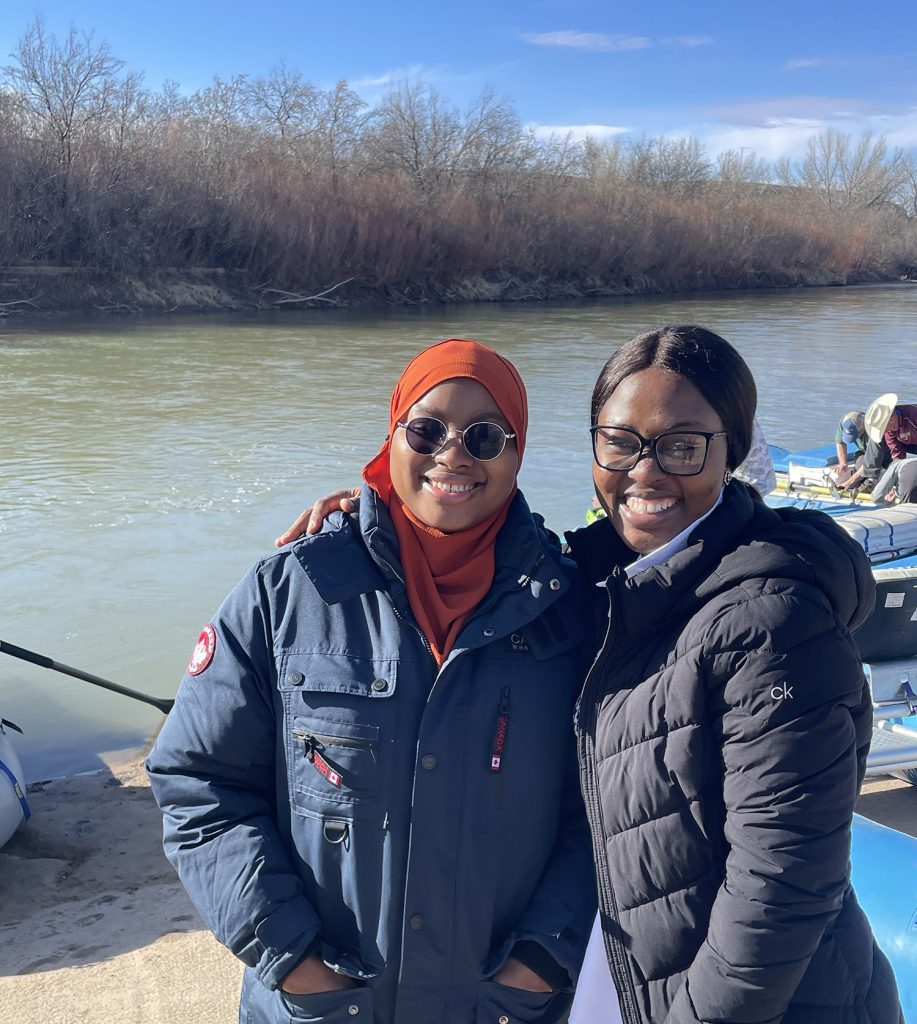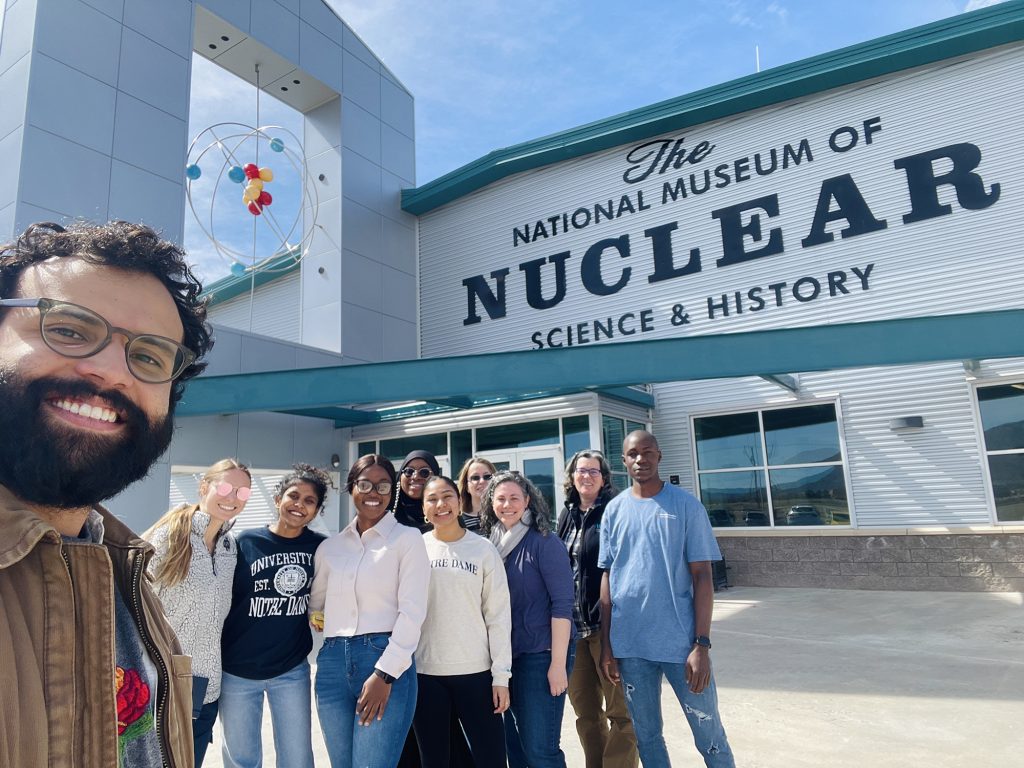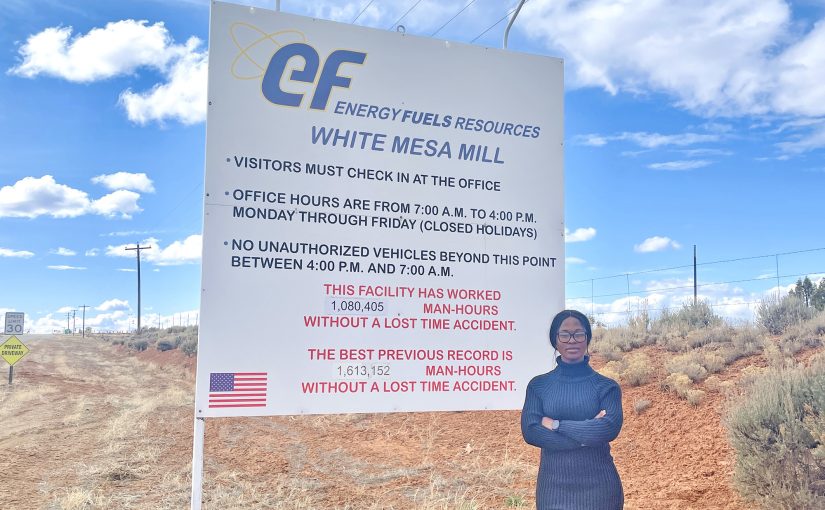Since my enrollment in the Keough School’s master of global affairs program with a concentration in sustainable development, I have been learning a lot about the tensions between environmental conservation and economic growth. This knowledge has shaped my growing interest in the complex interplay between environmental issues, Indigenous rights, and corporate interests.
My first encounter with Indigenous peoples in the United States was in 2022, when I visited the Winnebago community in Nebraska through my participation in the Mandela Washington Fellowship Program, a program of the U.S. Department of State. This experience was a great learning opportunity, though short-lived due to the time constraints of a one-day visit. So when I had the chance to spend my spring break in the Four Corners region of the Southwestern United States to learn about another Indigenous group, I jumped at the chance. through a policy course in Notre Dame’s GLOBES certificate program in environment and society,
The Ute Mountain Ute tribe has been engaged in an ongoing struggle with the environmental impacts of a local uranium mill, the White Mesa Uranium Mill. What we gathered from interacting with tribal members and leaders of nonprofits over five days of listening sessions is that the White Mesa Uranium Mill, located in Utah, has been a source of controversy since its establishment in the 1970s. The mill processes uranium ore and has been said to be the source of severe environmental damage and health problems in the surrounding communities, particularly those who live on the White Mesa Reservation. Upon arriving, I was struck by the stark beauty of the landscape: the towering mesas, the vast expanses of desert land, and the inviting blue sky. However, as we met and engaged in conversations with tribal members and environmental advocates, the picture became more complex. This experience opened my eyes to the complicated world of nuclear policy and the challenges faced by Indigenous communities. Here are five important things I learned:
- The impact of uranium milling extends far beyond the facility itself.
Before visiting the White Mesa Uranium Mill, I had a limited understanding of uranium milling, not to mention its far-reaching effects. However, as I spoke with tribal members in neighboring communities, it became clear that the mill’s impact extends far beyond its physical boundaries. From contaminated water sources to air pollution, the consequences of uranium milling are felt throughout the region as they affect the health and well-being of people, wildlife, and the environment.

- Regulatory loopholes can allow mills to operate despite environmental concerns.
One of the most surprising things I learned was the existence of regulatory loopholes that allow uranium mills like White Mesa to continue operating despite evidence of noncompliance with nuclear regulations like groundwater policies and the Clean Air Act. The lack of proper regulation and oversight of the mill was a recurring theme throughout our conversations. As a lawyer of the Grand Canyon Trust explained to us, the state’s lax enforcement of environmental standards and the mill’s ability to continually raise its compliance limits have allowed it to avoid accountability for its actions.
- Indigenous communities are often at the forefront of the fight for environmental justice.
Throughout my visit I was continually impressed by the resilience and determination of the Ute Mountain Ute Tribe in their fight against the White Mesa Uranium Mill. Despite facing numerous challenges of getting their voices heard, the tribe has remained committed to protecting their land, people, and cultural heritage. For example, tribal members have been vocal in their expression of discontent following the destruction of ancestral sites to construct the mill. My conversations with tribal members highlighted the crucial role that Indigenous communities play in the fight for environmental justice and the importance of amplifying their voices in discussions about nuclear policy.

- Addressing the challenges posed by uranium milling requires a multi-faceted approach.
As I learned more about the complex issues surrounding the White Mesa Uranium Mill, it became clear that there is no simple solution to complex environmental challenges. This complexity echoes some of the discussions in Prof. Dan Miller’s International Conservation and Development Politics class I am taking this semester regarding the dilemmas involved in engaging key actors on conservation issues. Addressing these dilemmas requires a multifaceted approach that includes closing regulatory loopholes, strengthening environmental monitoring, exploring alternative waste treatment methods, and holding mills accountable for their impact on surrounding communities. It also requires collaboration between tribal members, environmental advocates, and policymakers at all levels of government.
- The fight for environmental justice is a fight for the fundamental rights of all people.
Perhaps one of the most important lessons I learned from my visit to the Four Corners region is that the fight for environmental justice is not just about protecting the environment—it’s about protecting the fundamental rights of all people to live in a healthy and safe environment. The importance of putting people and communities at the center of our discussions about nuclear policy and environmental justice issues in general should remain a top priority.
I left the Four Corners region with a renewed sense of purpose and a deeper understanding of the complexities of environmental advocacy. The resilience and determination of the Ute Mountain Ute Tribe in the face of seemingly insurmountable odds is an inspiration to me to continue to work toward a more just, sustainable world.
Top photo: Master of global affairs student Beverly Ndifoin in front of a sign for Energy Fuels, the uranium mining company that operates the White Mesa Mill.
Editor’s note: Ute Mountain Ute Tribe members are not pictured due to members’ request.

